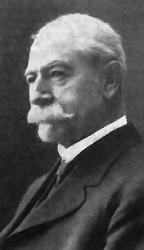Planning worship?
Check out our sister site, ZeteoSearch.org,
for 20+ additional resources related to your search.
- |
User Links
Person Results
Christoph Peter
1626 - 1669 Person Name: C. Peter Composer of "PETER" in American Lutheran Hymnal Born: 1626 - Weida, Vogtland, Thuringia, Germany
Died: December 4, 1669 - Guben
Christoph Peter [Petraeus] was a German composer and music editor. His first appointment was as schoolmaster and Kantor at Grossenhain, Saxony. He moved in 1655 to Guben, where he was Kantor until his death. He worked closely there with the poet and civic official Johann Franck. 40 melodies in the latter’s Geistliches Sion (1672), the first part of his Teutsche Gedichte, are by Peter, and he referred to Peter’s skills in the second part, Irdischer Helicon (1674). Peter’s Andachts-Zymbeln is an anthology of chorales by various composers which also contains preliminary instructional matter, a letter of 1524 from Martin Luther to Spalatin, and testimonials to Peter from Franck and others. It may well be significant that he inscribed it to the mayor and corporation of Guben in the year in which he arrived at Guben and that he received rights of citizenship there early the following year. Precationis thuribulum (RISM 16691) consists of masses by Saxon composers based on familiar chorales and set for various combinations of voices and instruments with continuo. The Geistliche Arien includes settings of poems by, among others, Johann Franck, Johann Rist and Paul Gerhardt, and Peter explained that they are for solo voice (with instruments) ‘so that the words can be better understood’.
--Bach Cantatas Website
Christoph Peter
August Crull

1845 - 1923 Person Name: A. Crull Translator of "Draw Us To Thee" in American Lutheran Hymnal August Crull was born January 27, 1845 in Rostock, Germany, where his father, Hofrat Crull, was a lawyer. He was educated at the Gymnasium in Rostock, and at Concordia College in St. Louis and Fort Wayne where he graduated in 1862. His father died soon after he began studying at the Gymnasium. His mother then married Albert Friedrich Hoppe, who later became the editor of the St. Louis edition of Luther's Works. In 1865, Crull graduated from Concordia Seminary in St. Louis. He became assistant pastor at Trinity Church in Milwaukee and also served as Director of the Lutheran High School. Later he was pastor of the Lutheran Church in Grand Rapids, Michigan. From 1873 to 1915, he was professor of the German language and literature at Concordia College in Fort Wayne, Indiana. After his retirement he returned to Milwaukee, where he died on February 17, 1923. His first wife and three of his four children preceded him in death. His second wife, Katharina John, survived him by many years.
Crull was a distinguished hymnologist and translated many hymns that appeared in several Lutheran hymnals. He published a German grammar and edited a book of devotions, Das walte Gott, based on the writings of Dr. C.F.W. Walther. His project of translating Lutheran hymns so they would be accessible to American Lutherans bore its first fruits when he published a book of English hymns at the Norwegian Synod publishers in Decorah, in 1877.
--www.hymnsandcarolsofchristmas.com/
August Crull
Friedrich Funcke
1642 - 1699 Person Name: Fr. Funcke Author of "Draw Us To Thee" in American Lutheran Hymnal Funcke, Friedrich, was born at Nossen in the Harz, where he was baptised March 27, 1642. After receiving a general and musical education at Freiberg and Dresden, he became cantor at Perleberg, and then, in 1664, Stadt Cantor at Luneburg. He was, in 1694, appointed pastor at Römstedt, a few miles south of Lüneburg, and died there Oct. 20, 1699. He revised the Lüneburg Gesangbuch, 1686, and contributed to it 43 melodies and 7 hymns (Blätter für Hymnologie, 1884, pp. 115, 135, 146; 1885, p. 121).
One has passed into English, viz.:—
Zeuch uns nach dir, so kommen wir. [Ascensiontide!] First published in the Lüneburg Stadt Gesang-Buch, 1686, No. 593y? in 5 st. of 4 l., signed "F. F.," and founded on Canticles i. 4. Repeated in Freylinghausen's Gesang-Buch, 1705, No. 699, the Berlin Geistliche Lieder , ed. 1863, No. 341, and many other collections. Often wrongly ascribed to Ludämilia Elizabeth (q.v.), or to Friedrich Fabricius (b. April 20, 1642, at Stettin, and died there Nov. 11, 1703, as Pastor of St. Nicholas's Church).
The only translation in common use is:—
Draw us to Thee, Lord Jesus. A somewhat free translation omitting st. ii. by Miss Winkworth in her Chorale Book for England, 1863, No. 68. Repeated in Dr. Thomas's Augustine Hymnbook, 1866, Marlborough College Hymnbook, 1889, and in America in the Pennsylvania Lutheran Church Book, 1868.
Other translations are: (l) “Draw us, Saviour, then will we," by Miss Dunn, 1857, p. 102. (2) "Draw us to Thee, So shall we flee," by N. L. Frothingham, 1870, p. 275.
The hymn beginning, "Draw us to Thee, in mind and heart," by A. T. Russell, in 4 st., as No. 269 in his Psalms & Hymns, 1851, while not a translation of, is based on this German hymn. Repeated in Dr. Pagenstecher's Collection, 1864, and in J. L. Porter's Collection, 1876. [Rev. James Mearns, M.A.]
--John Julian, Dictionary of Hymnology
Friedrich Funcke


 My Starred Hymns
My Starred Hymns

